
Dr. Greg Arkos travels to Mexico to view the spectacular natural event
Dr. Greg Arkos, a VIU Astronomy Professor, travelled to Mazatlán, Mexico to view the total solar eclipse. The eclipse crossed North America, passing over Mexico, the United States and Canada on April 8, 2024.
Here’s what Arkos had to say about his experience:
Total Solar Eclipses are rare events – while they typically occur somewhere on Earth every year or two, at a given location it can be an average of 400 years between such events! I had experienced my first total solar eclipse as a child growing up in Winnipeg but would have to travel (as an adult) to Idaho to see my second in 2017. Following that incredible experience, I knew I had to try to view the 2024 eclipse, which would be the last (readily visible) total solar eclipse in North America until 2044.
A few months before the eclipse I finally decided to travel to Mazatlán, Mexico to try to catch the eclipse from there, given that Mazatlán had the (historically) best chance of clear skies along the 2024 eclipse track. I secured accommodations in a beach-side condo with a friend of one of my current work colleagues and ended up viewing the eclipse from the pool-level terrace at the condo. Two students, one former and one current, independently made their way to Mazatlán and the three of us viewed the eclipse together.
As eclipse day approached, the cloud forecasts for Mazatlán grew more and more polarized, so it was a toss-up as to what we might get in terms of viewing conditions. In the end, while there was a pervasive thin but variable cloud throughout the eclipse, we could view the entire event and the cloud had minimal impact on the overall experience.
Mazatlán was a fabulous location from which to take in such a breathtaking natural event and it was well worth the time, effort and resources it took to make viewing this eclipse happen. I cannot overstate how much I recommend to anyone that they see a total solar eclipse in person at some point in their lifetime. As inspiration, the next few total solar eclipses will take place in Spain in 2026, Egypt in 2027 and Australia in 2028, so start planning now and experience one of these truly spectacular astronomical events yourself.
Here is a selection of my images to give you a taste of what we experienced. I hope you enjoy!
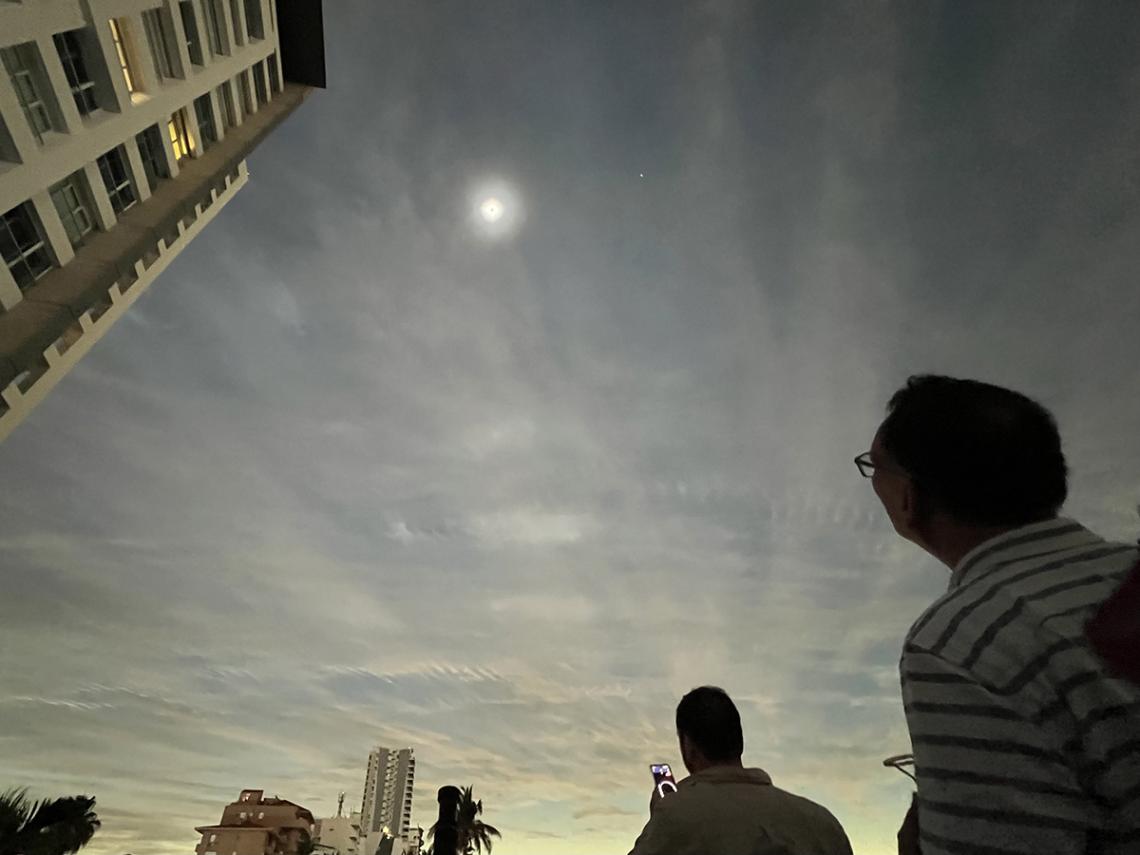
Gazing up during totality. The bright object to the right of the eclipsed Sun is the planet Venus. You can get a sense of the variable but pervasive cloud, and so we were unable to see other stars come out during totality as I did during the eclipse of 2017.
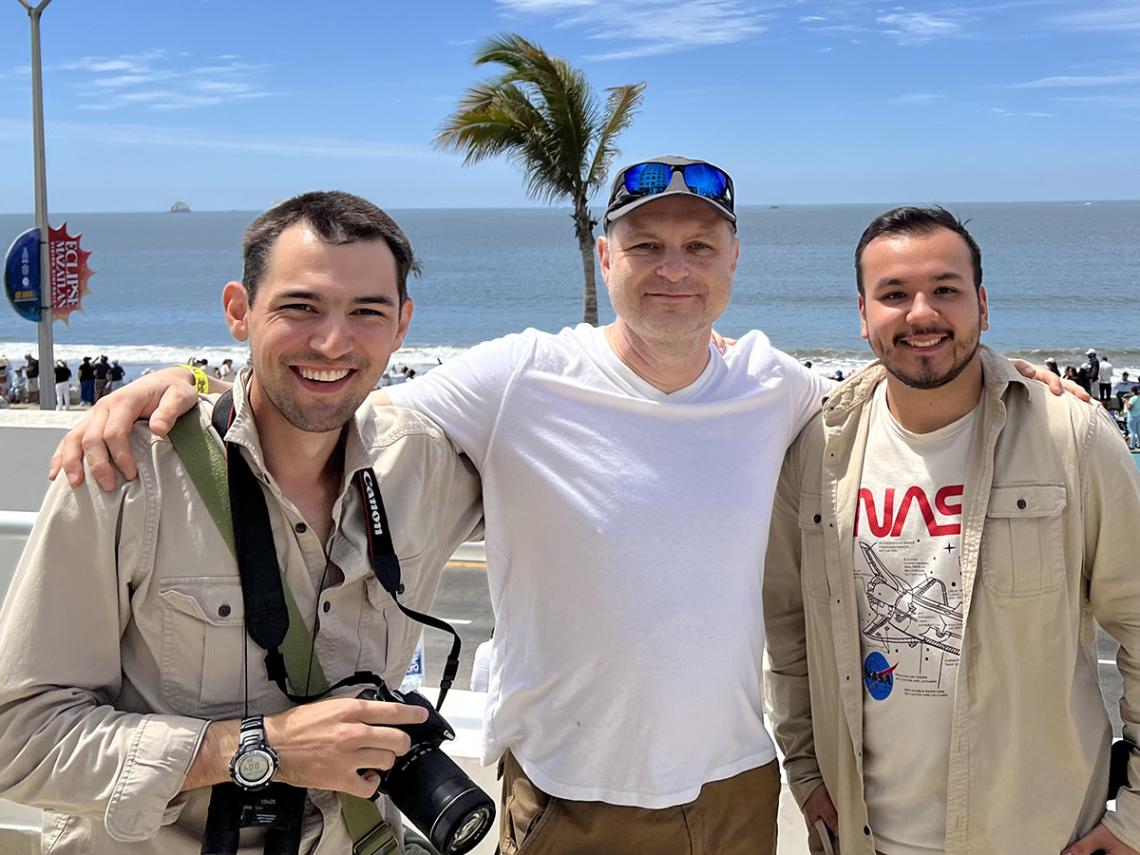
The “tres caballeros” on the day of the eclipse (from left), Jonathan, myself and Robert. Note the beachfront is just across the road below and behind us and was filled for many kilometres in either direction with thousands upon thousands of people watching the eclipse. We were glad to be nearby and take in the energy of the crowd.
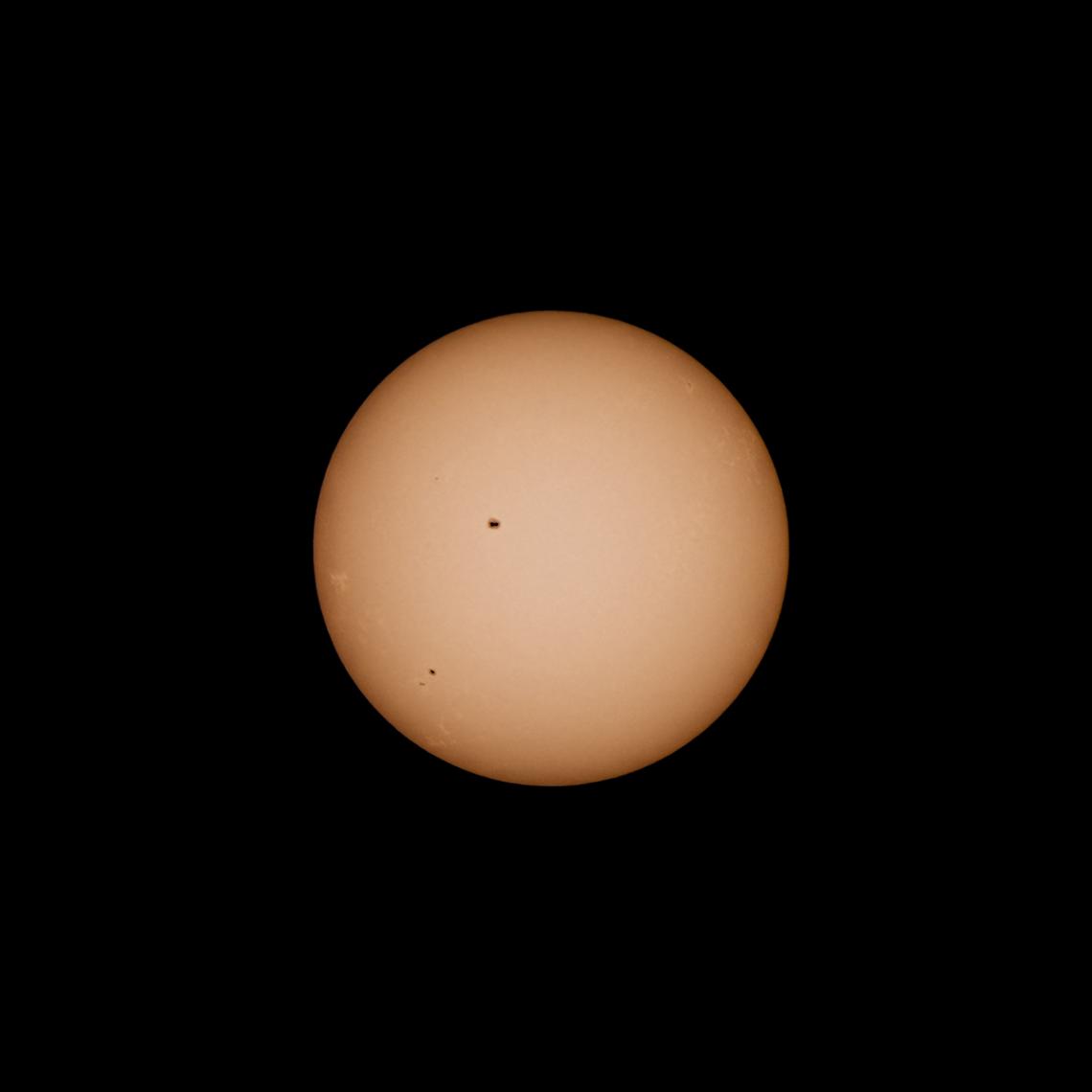
The Sun just before first contact. No sign of the magical event about to commence!
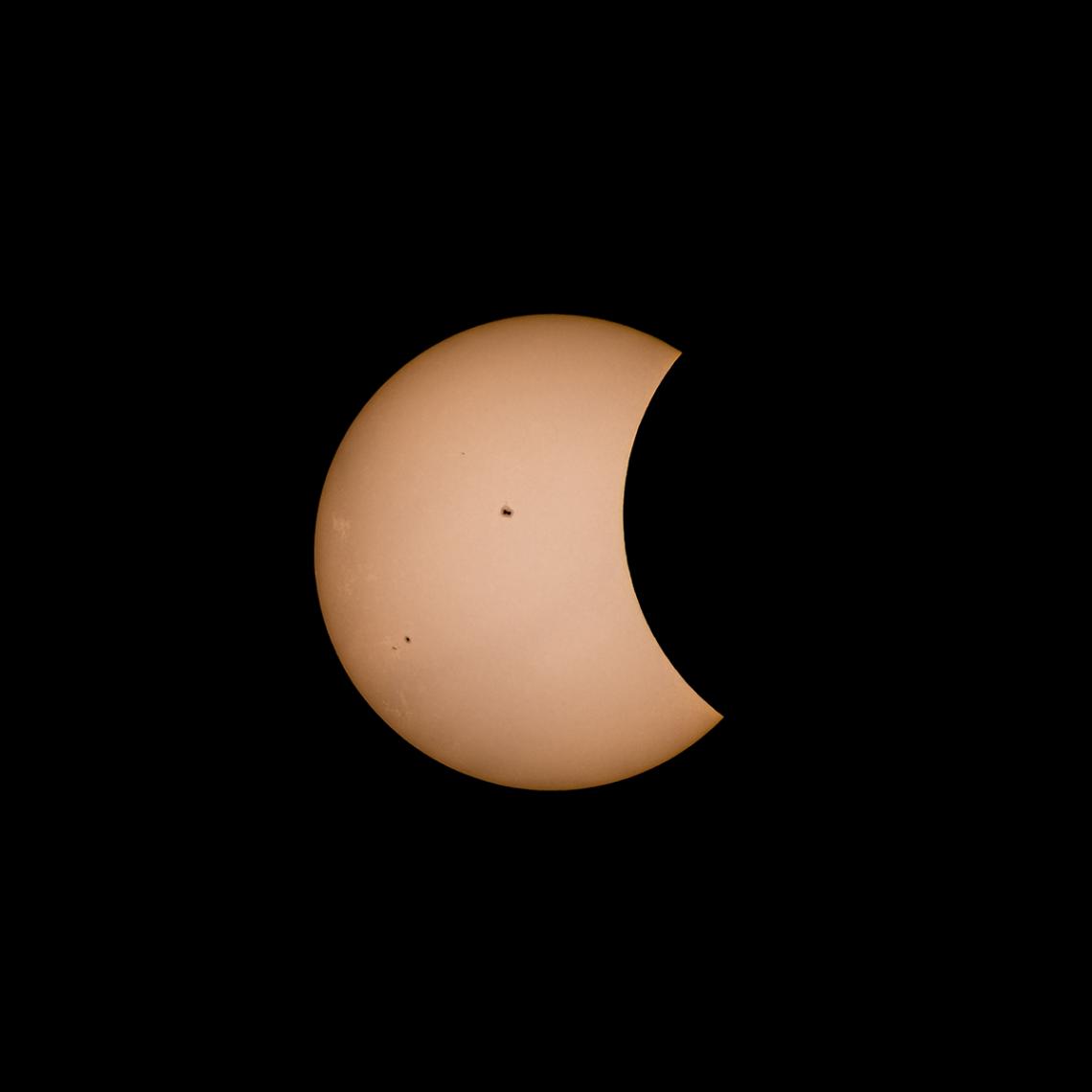
Watching the Moon slowly inch its way in front of the Sun. This is about what would have been visible from Nanaimo (had it been clear).
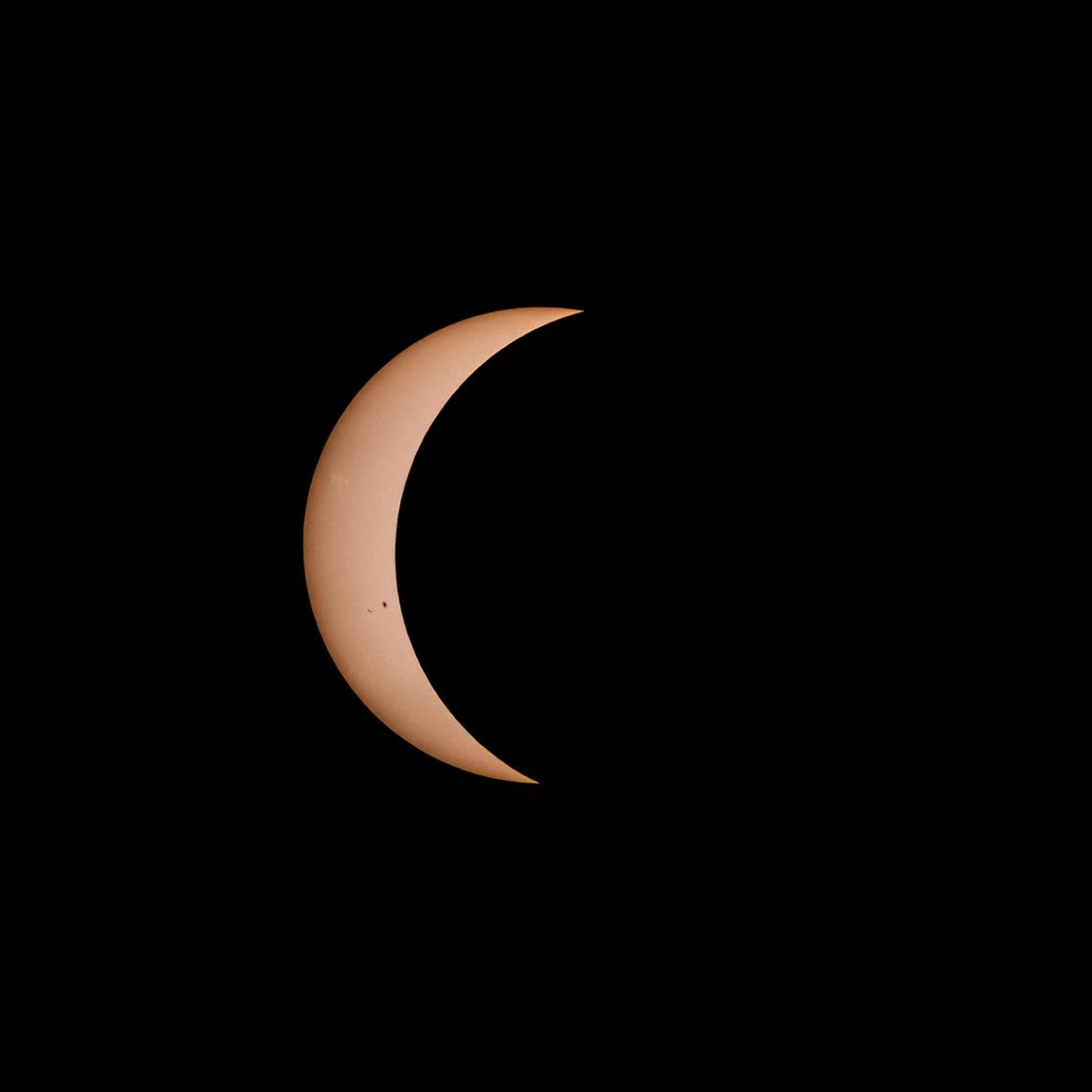
Getting close now. And excitement was building amongst all the observers! It started to feel cooler and a bit dimmer and the quality of the light began to change, becoming more “metallic” in feel. The “lead in” to totality was about an hour or so (and the same as the Moon uncovered the Sun after totality), so the entire eclipse took about 2.5 hours, end-to-end.
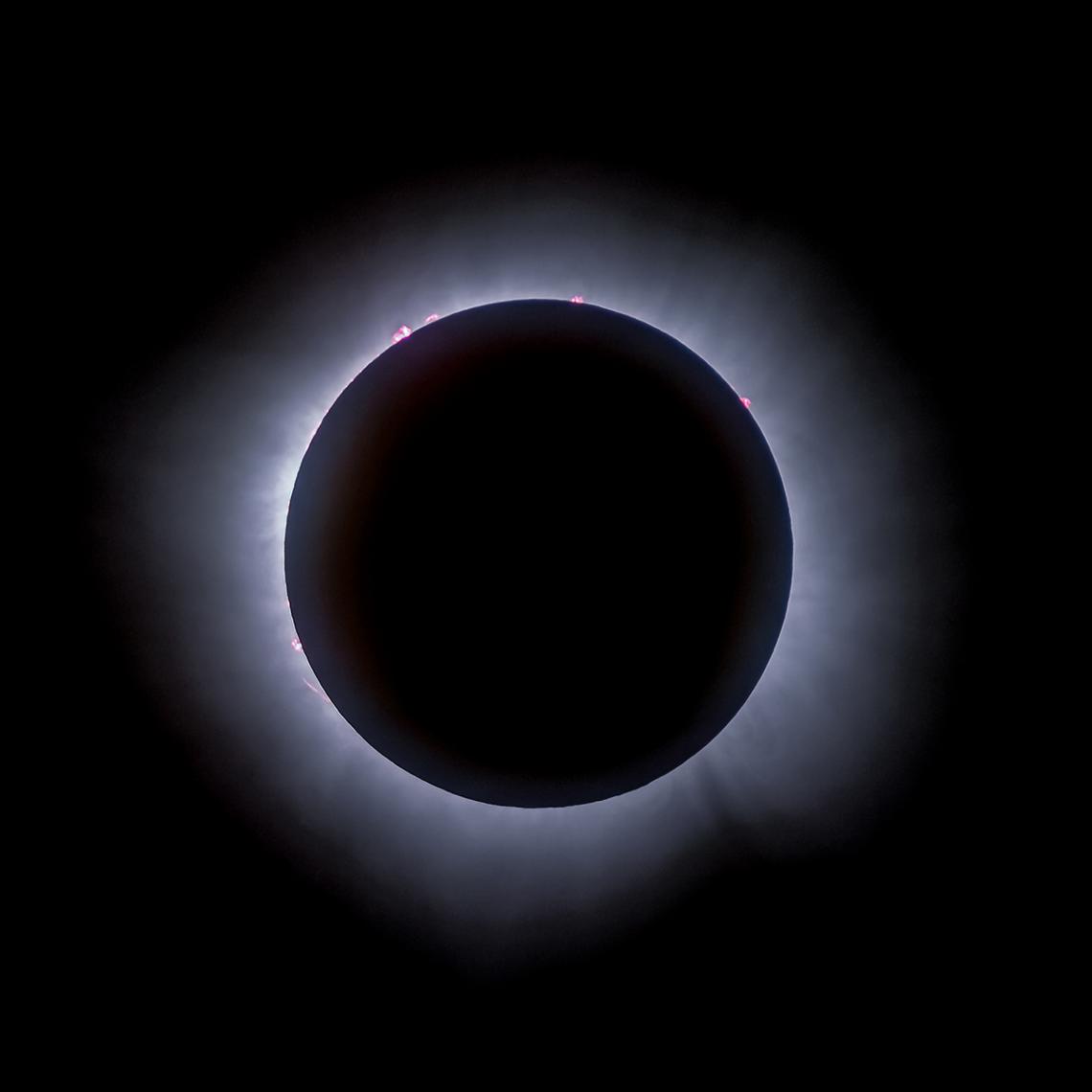
Totality at last! Eclipse glasses could come off and you could safely look at the Sun at this point. Even naked eye we could see bright pink solar prominences at various points around the edge of the Sun peeking out from the Moon’s disk. In addition, the asymmetric glow of the solar corona was visible at last (its brightness is similar to that of the full Moon). So much to look at - and only just over four minutes to enjoy it before totality would end.
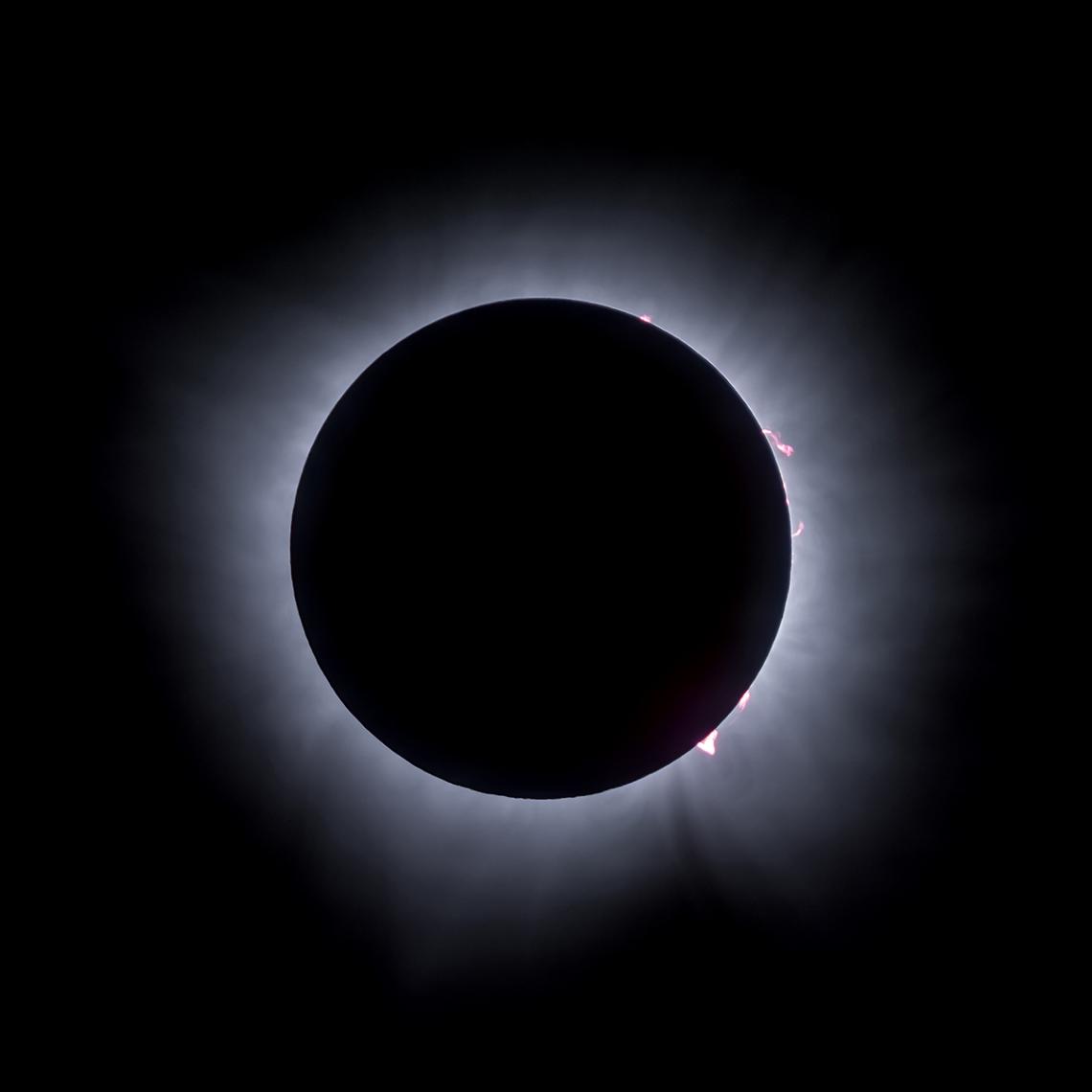
Nearing the end of totality we could finally see the full extent of prominences on the other side of the Sun!
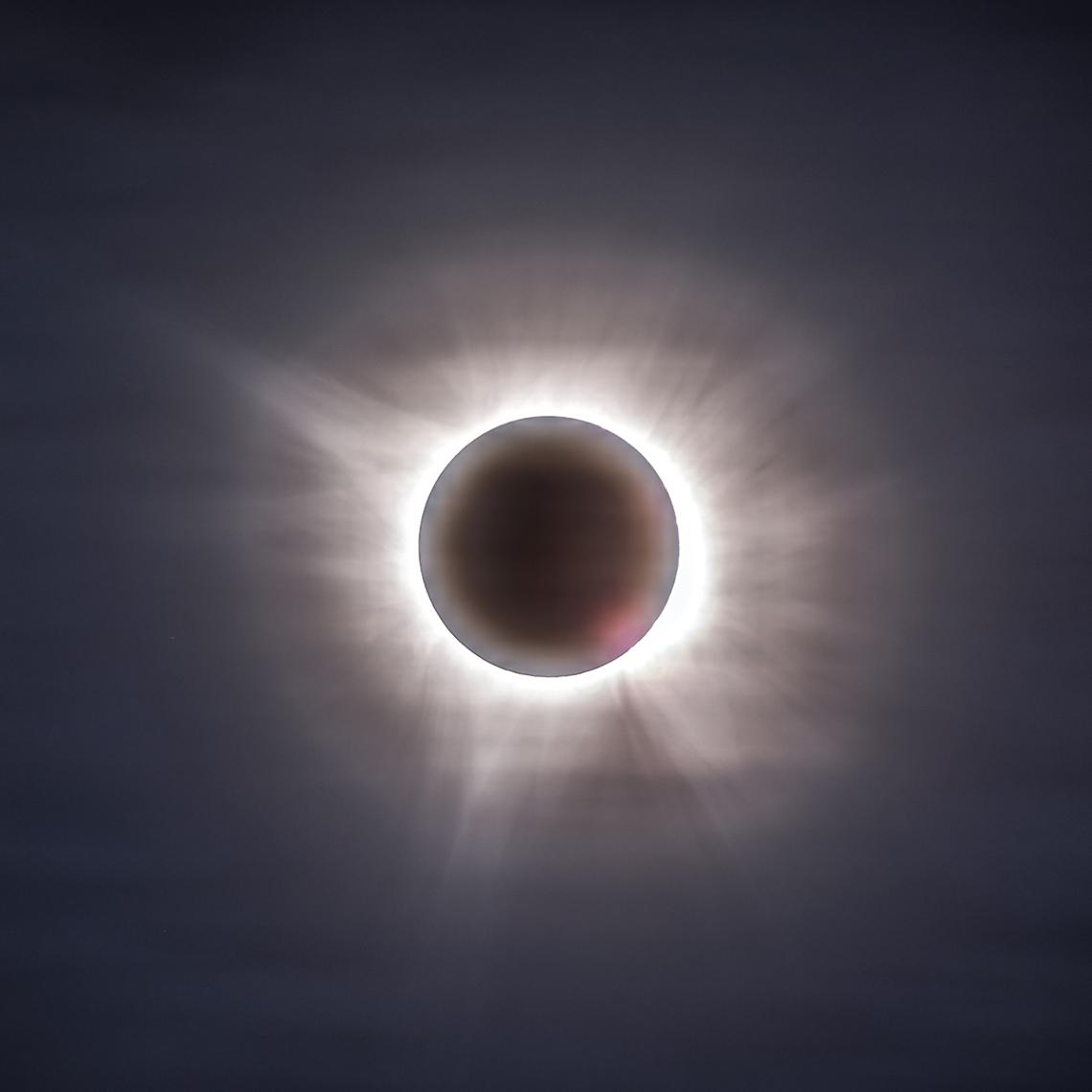
Some of the fainter outer portions of the solar corona. Just like in children’s drawings of the Sun, the corona has a spiky, asymmetric shape to it and appears very different for every total solar eclipse. Imaging it requires a series of variable exposure shots composited together.
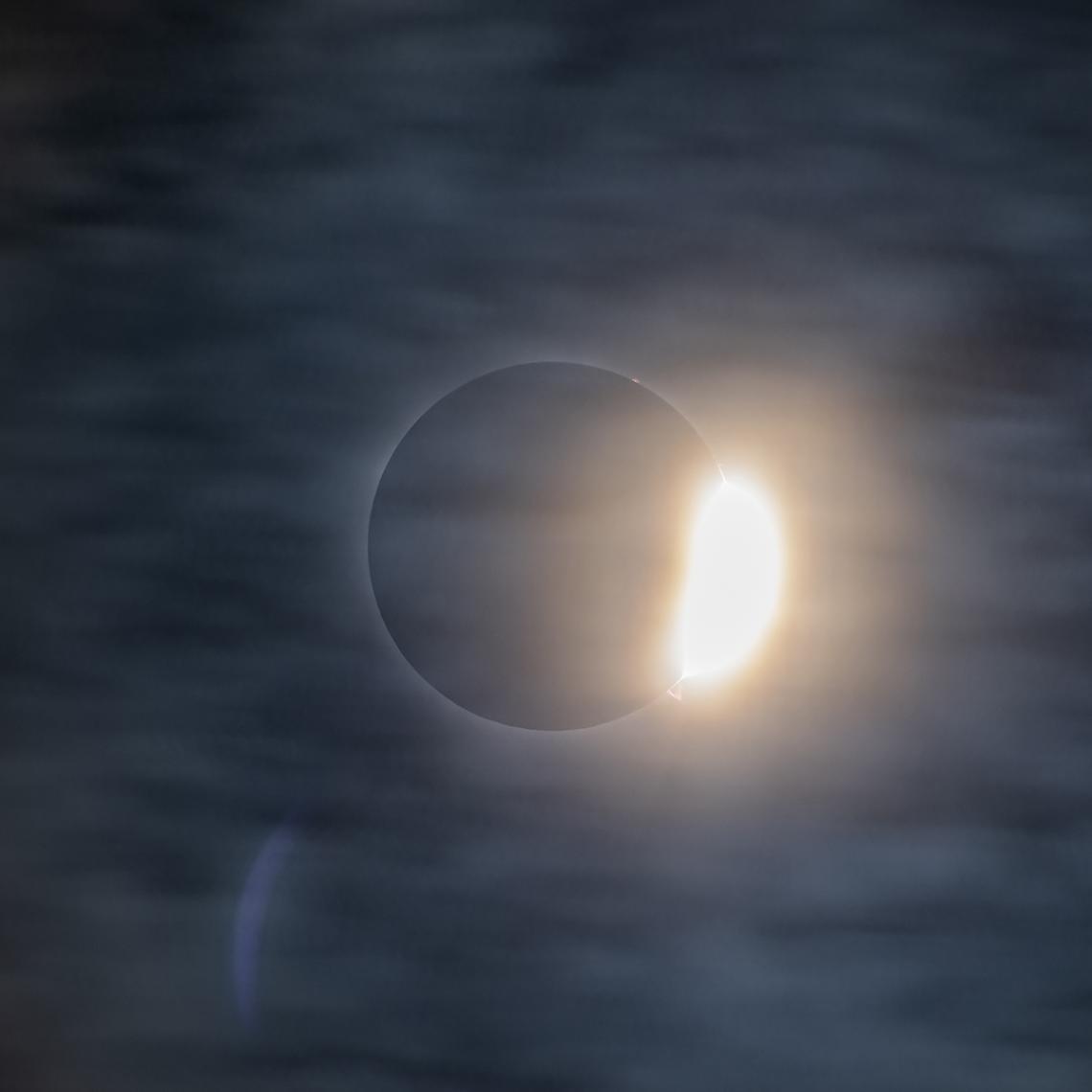
“Diamond Ring” marks the end of totality as the Sun begins to peek out from behind the Moon - if you catch this part just right it looks much like a Diamond Ring, hence the name!



